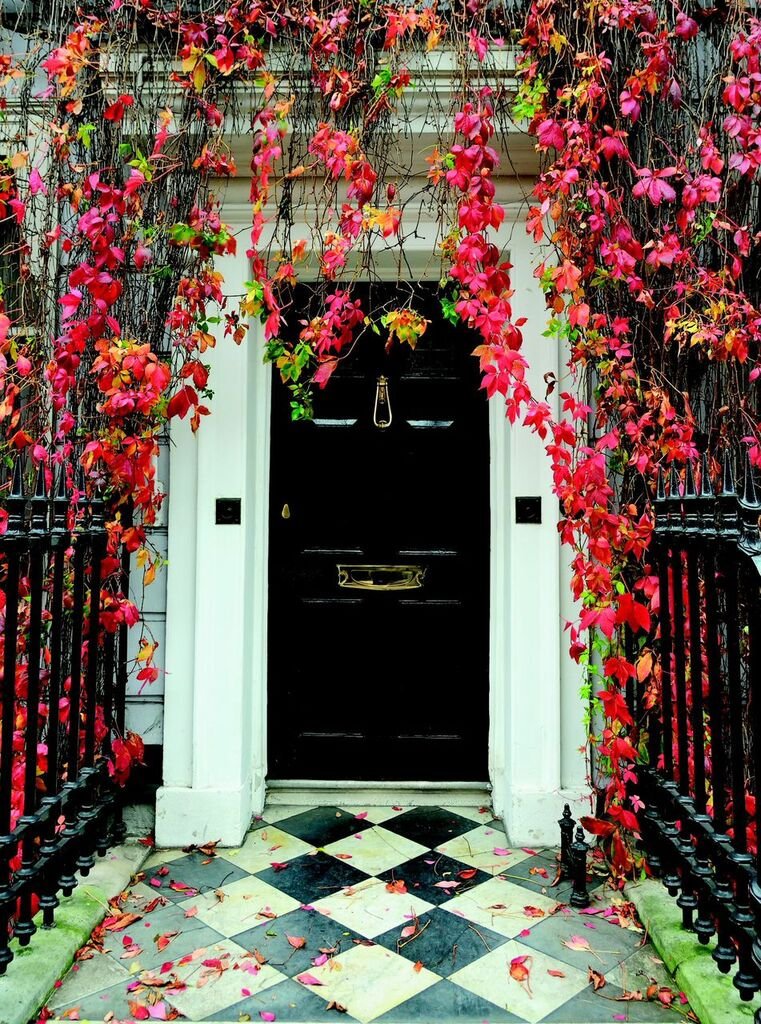Some background to Victorian exterior paint colours
Up until the end of the 19th Century, painters and decorators used their own paint recipes and no ready mixed paints existed, hence there were no 'standard' paint colours. Oil based paints included ingredients such as lead and turpentine and most of the colours came from natural products. In the early Victorian period exterior paintwork including doors, door frames and windows tended to use colours such as browns, greens and grained wood effects, and then finished off with a varnish, hence the high gloss appearance. It was not until the end of the Victorian era that white painted exterior joinery such as window frames become popular.
How do you choose paint colours for the exterior of your Victorian house?
When choosing the paint colour, you need to consider the surrounding houses and the brickwork that the door is set into. If you have red brickwork, you need a strong colour for your front door so it is not lost within it. If your brickwork is painted in a pale colour, a strong colour may be too much of a contrast so you may wish to tone your colour choice down to a Grey instead of a Black, or a pale blue instead of a navy. You also need to consider the age of your house and what would have been correct for the era, but also choose a colour you like, within reason. If you use hot pink on a Victorian terrace front door, it's a surefire way to make a statement, but whether it's the right statement is a matter for debate.
Due to the fact that a front door is external with daylight shining on it, any colour will always appear a shade or two lighter so you can afford to be a little bolder when choosing a front door colour. Always go for two shades darker than you would like the door to appear as the daylight will distort the colour somewhat.
Brilliant white is a relatively new invention colour wise so if you wish to go for White but remain period in feel, choose an off white colour.
As for the paint finish, that's a matter of taste but in general full gloss works best for strong deep colours - if using an eggshell finish for strong colours, it tends to make them look less in keeping with a period home. Conversely, for paler softer colours, eggshell works better on period houses. And always paint the door frame the same colour as the door otherwise it can make the entrance look disjointed.
Of course once you have redecorated your front door you'll want to upgrade your door furniture and lighting. A new door handle and door knocker will be the perfect finishing touches to your revamped entrance; choose black or brass for the traditional period feel. Traditional exterior lighting has benefits both in terms of the aesthetics and security. Get your light fitted with a PIR sensor so that it comes on when somebody approaches the door. This is useful for illuminating the entrance so you can put your key in the lock and for warning of approaching visitors. The traditional finish for period light would be brass or bronze, although a tarnished green brass colour is quite popular.

What's the best time of day to redecorate your front door?
Choose a day when you do not need to go out so that when you have applied each coat of paint, the door can be left open. If it is closed when the paint is wet, the paint will stick to the frame causing the door to be glued shut. Also try to plan the job so that you are painting early in the day so that the paint can dry before you need to go to bed. Do not paint the door on a very hot or very cold day or when rain is forecast.
Once you have removed all your door furniture, clean the door and sand it lightly all over, both to remove any lumps and bumps and to give the new paint a surface to grip. Sand away any chipped paint. Make sure that when you run your hand over the door surface it is smooth all over. If there are any cracks or holes, these need to be filled with wood filler. Once the filler has dried it will also need to be sanded so that the surface is smooth and flat. Ideally, paint the door with an undercoat if you are changing it's colour. The undercoat should be the closest shade you can buy to your final colour. Allow to dry. Finish with two coats of your chosen colour. The first coat needs to be completely dry before applying the second coat. Wait until the following day before fitting your new door furniture.
It may take you a while to get used to the change but hopefully you will have chosen the right Victorian paint colour for your front door and it will make you smile every time you return home. You may also find our article on creating a Victorian entrance useful and don't forget to look at our Victorian ironmongery to make you door complete. You can read our ultimate guide to period property renovation here.




Be the first to add a comment...